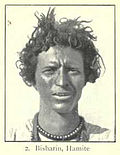Evropeidna rasa
 |
 |
 |
 |
 |
 |
 |
 |
Evropeidna rasa (kavkazoidna rasa) je prema nekadašnjoj, a danas uglavnom odbačenoj rasnoj podeli,[1] jedna od triju glavnih ljudskih rasa, uz negroidnu i mongoloidnu. Autohtono je rasprostranjena u Evropi, severnoj Africi, severnoj Indiji i jugozapadnoj Aziji, a alohtono u Americi, Australiji i južnoj Africi.[2][3][4]
Glavne fizičke značajke ove rase su svetla ili mrka koža, ravna, meka ili talasasta kosa, razijena tercijarna kosmatost, tanke usne i uzak nos. Boja kose i očiju varira od svetlih do tamnih nijansi.
U modernijim klasifikacijama, evropeidnu ili kavkazoidnu rasu zamenjuje pojam "belci" ili "bela rasa", te se uglavnom rabi kod samoidentifikacije u popisima stanovništva nekih država poput Sjedinjenih Američkih Država,[5][6] Kanade, Ujedinjenog Kraljevstva i Južnoafričke Republike. Tu su praksu odbacile mnoge države, poput Nemačke, Australije,[7] Argentine,[8] i Kolumbije,[9] gde se u popisima ne postavljaju pitanja rase ili boje kože.
Povezano
urediReference
uredi- ↑ Jennifer K. Wagner, Joon‐Ho Yu, Jayne O. Ifekwunigwe, Tanya M. Harrell, Michael J. Bamshad, Charmaine D. Royal (Veljača 2017.). „Anthropologists' views on race, ancestry, and genetics”. American Journal of Physical Anthropology 162 (2): 318–327. 10.1002/ajpa.23120. Pristupljeno 2021-01-15.
- ↑ Coon, Carleton Stevens (1939). The Races of Europe. New York: The Macmillan Company. str. 400–401. »This third racial zone stretches from Spain across the Straits of Gibraltar to Morocco, and thence along the southern Mediterranean shores into Arabia, East Africa, Mesopotamia, and the Persian highlands; and across Afghanistan into India[...] The Mediterranean racial zone stretches unbroken from Spain across the Straits of Gibraltar to Morocco, and thence eastward to India[...] A branch of it extends far southward on both sides of the Red Sea into southern Arabia, the Ethiopian highlands, and the Horn of Africa.«
- ↑ Pickering, Robert (2009). The use of forensic anthropology. CRC Press. str. 82. ISBN 1-4200-6877-6.
- ↑ Smay, Diana and Armelagos, George. Emory University. "Galileo Wept: A Critical Assessment of the Use of Race in Forensic Anthropology" [1] Arhivirano 2018-08-18 na Wayback Machine-u
- ↑ „Race”. United States Census Bureau.
- ↑ Bhopal, R.; Donaldson, L. (1998). „White, European, Western, Caucasian, or what? Inappropriate labeling in research on race, ethnicity, and health”. American Journal of Public Health 88 (9): 1303–1307. DOI:10.2105/ajph.88.9.1303. PMC 1509085. PMID 9736867.
- ↑ „Aboriginal and Torres Strait Islander Peoples and the Census After the 1967 Referendum”. Abs.gov.au. 5. jul 2011.
- ↑ Ackerman, Ruthie (27. novembar 2005). „Blacks in Argentina – officially a few, but maybe a million”. The San Francisco Chronicle.
- ↑ „Colombia: Race and Ethnicity”. Library of Congress Country Studies. Arhivirano iz originala na datum 29. oktobar 2004.
Literatura
uredi- Mastilo, Natalija (2005): Rečnik savremene srpske geografske terminologije, Geografski fakultet, Beograd
- Leroi, Armand Marie (2005-03-14). „A Family Tree in Every Gene”. The New York Times. str. A23.
- Lewonin, R. C. (2005). „Confusions About Human Races”. Race and Genomics, Social Sciences Research Council. Arhivirano iz originala na datum 2013-05-04. Pristupljeno 2006-12-28.
- Painter, Nell Irvin (2003) (PDF). Collective Degradation: Slavery and the Construction of Race. Why White People are Called Caucasian. Yale University. Arhivirano iz originala na datum 2013-10-20. Pristupljeno 2006-10-09.
- Risch N, Burchard E, Ziv E, Tang H (July 2002). „Categorization of humans in biomedical research: genes, race and disease”. Genome Biol. 3 (7): comment2007.2001–12. DOI:10.1186/gb-2002-3-7-comment2007. PMC 139378. PMID 12184798.[mrtav link]
- Rosenberg NA, Pritchard JK, Weber JL i dr.. (December 2002). „Genetic structure of human populations”. Science 298 (5602): 2381–5. Bibcode 2002Sci...298.2381R. DOI:10.1126/science.1078311. PMID 12493913.
- Rosenberg NA, Mahajan S, Ramachandran S, Zhao C, Jonathan K. Pritchard, Feldman MW (December 2005). „Clines, Clusters, and the Effect of Study Design on the Inference of Human Population Structure”. PLoS Genet. 1 (6): e70. DOI:10.1371/journal.pgen.0010070. PMC 1310579. PMID 16355252.
- Templeton, Alan R. (September 1998). „Human races: A genetic and evolutionary perspective”. American Anthropologist 100 (3): 632–650. DOI:10.1525/aa.1998.100.3.632. JSTOR 682042.
- Camberg, Kim (2005-12-13). „Long-term tensions behind Sydney riots”. BBC News. Pristupljeno 2007-03-03.
- Johann Friedrich Blumenbach, On the Natural Varieties of Mankind (1775) — the book that introduced the concept
- Gould, Stephen Jay (1981). The mismeasure of man. New York: Norton. ISBN 0-393-01489-4. — a history of the pseudoscience of race, skull measurements, and IQ inheritability
- Piazza, Alberto; Cavalli-Sforza, L. L.; Menozzi, Paolo (1996). The history and geography of human genes. Princeton, N.J: Princeton University Press. ISBN 0-691-02905-9. — a major reference of modern population genetics
- Cavalli-Sforza, LL (2000). Genes, peoples and languages. London: Allen Lane. ISBN 0-7139-9486-X.
- Augstein, HF (1999). „From the Land of the Bible to the Caucasus and Beyond”. u: Harris, Bernard; Ernst, Waltraud. Race, science and medicine, 1700–1960. New York: Routledge. str. 58–79. ISBN 0-415-18152-6.
- Baum, Bruce (2006). The rise and fall of the Caucasian race: a political history of racial identity. New York: New York University Press. ISBN 0-8147-9892-6.
- Guthrie, Paul (1999). The Making of the Whiteman: From the Original Man to the Whiteman. Chicago, IL: Research Associates School Times. ISBN 0-948390-49-2.
- Wolf, Eric R.; Cole, John N. (1999). The Hidden Frontier: Ecology and Ethnicity in an Alpine Valley. Berkeley: University of California Press. ISBN 0-520-21681-4.